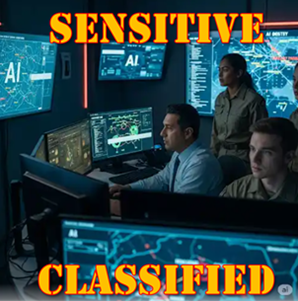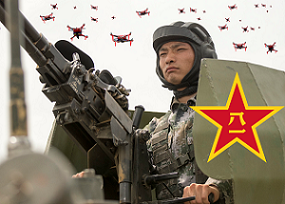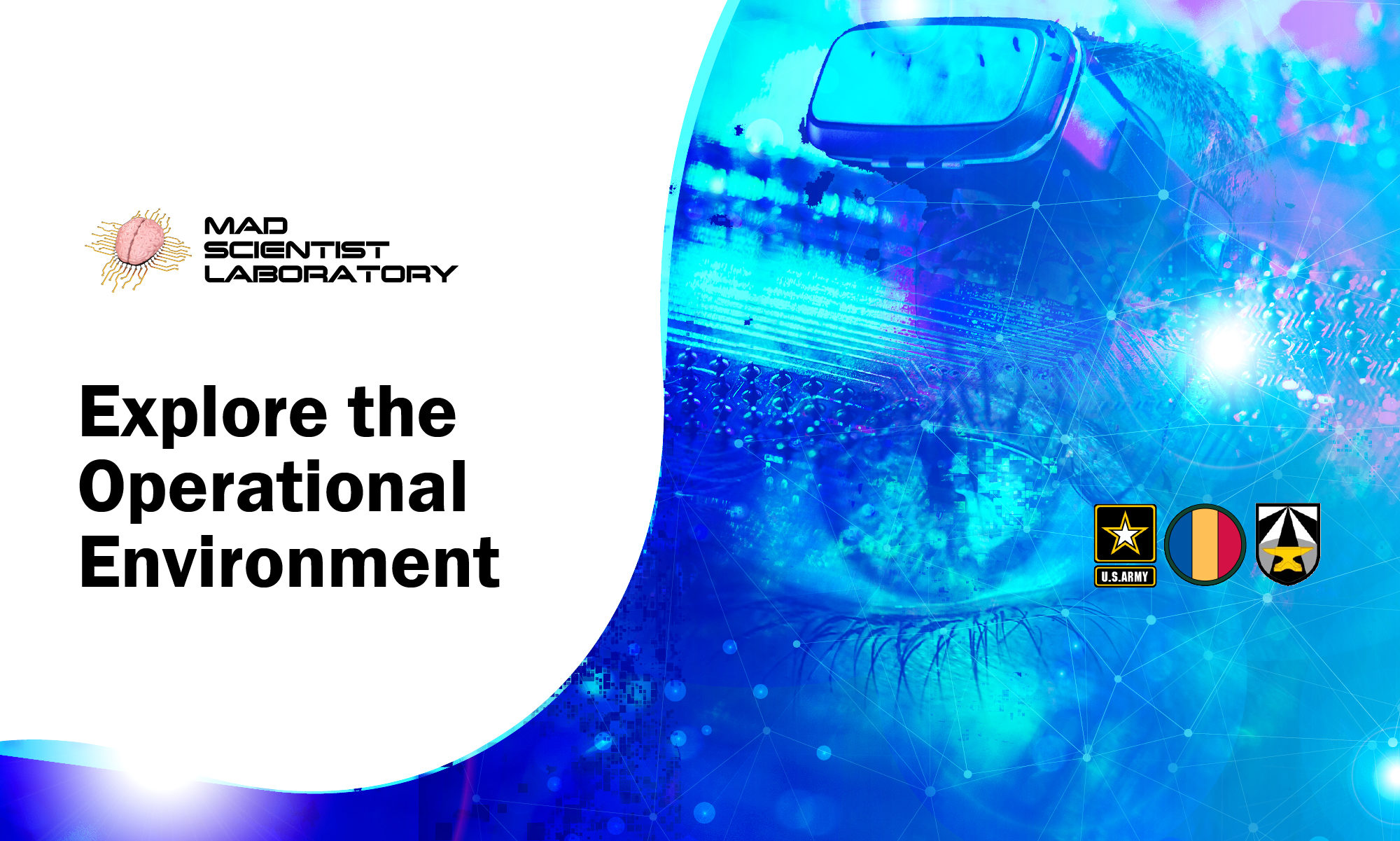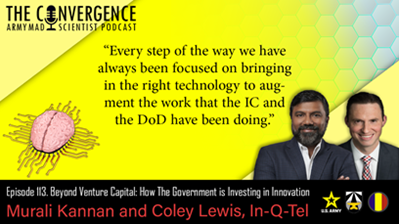“Every step of the way we have always been focused on bringing in the right technology to augment the work that the IC and the DoD have been doing.”
[Editor’s Note: Regular readers of the Mad Scientist Laboratory understand the transformative potential of Large Language Models (LLMs) and Artificial Intelligence (AI) have on the character of warfare — for a comprehensive list of previously published blog posts and podcasts exploring the potential application of these technologies across the Operational Environment, scroll to the bottom of this post and explore the content associated with each of the associated links.
 Today’s The Convergence podcast features two senior leaders from In-Q-Tel (IQT) discussing how their not-for-profit company is accelerating the introduction of groundbreaking technologies to facilitate innovation within the Department of Defense (DoD) and the Intelligence Community (IC), enhancing the national security and prosperity of the United States and its Allies — Enjoy!]
Today’s The Convergence podcast features two senior leaders from In-Q-Tel (IQT) discussing how their not-for-profit company is accelerating the introduction of groundbreaking technologies to facilitate innovation within the Department of Defense (DoD) and the Intelligence Community (IC), enhancing the national security and prosperity of the United States and its Allies — Enjoy!]
[If the podcast dashboard is not rendering correctly for you, please click here to listen to the podcast.]
 Murali Kannan leads Enterprise Technologies at In-Q-Tel (IQT) as Vice President and Practice Lead, where he directs investment strategy for enterprise data infrastructure, generative AI applications, and AI-enabled vertical solutions. Working closely with venture partners and government stakeholders, he identifies and invests in innovative startups addressing critical national security challenges for the U.S. and allied intelligence and national security communities.
Murali Kannan leads Enterprise Technologies at In-Q-Tel (IQT) as Vice President and Practice Lead, where he directs investment strategy for enterprise data infrastructure, generative AI applications, and AI-enabled vertical solutions. Working closely with venture partners and government stakeholders, he identifies and invests in innovative startups addressing critical national security challenges for the U.S. and allied intelligence and national security communities.
Prior to joining IQT, Murali built his expertise at Accenture, Mythics, and GDIT, where he spearheaded teams delivering transformative data analytics initiatives across commercial and government sectors. His educational background combines business acumen with technical expertise, including an MBA from MIT Sloan, a Master’s from Northeastern, specialized certifications from Georgetown and Columbia, and leadership training from Harvard Business School.
Coley Lewis’  career at IQT spans over 10 years and he has served in various capacities over his tenure. He currently serves as Vice President of Growth Partnerships, where he leads a team responsible for the identification, development, and execution of new partnerships within the national security community. Coley sets the growth strategy for IQT and works across IQT teams to successfully onboard new partners and maximize impact to mission.
career at IQT spans over 10 years and he has served in various capacities over his tenure. He currently serves as Vice President of Growth Partnerships, where he leads a team responsible for the identification, development, and execution of new partnerships within the national security community. Coley sets the growth strategy for IQT and works across IQT teams to successfully onboard new partners and maximize impact to mission.
Prior to joining IQT, Coley was the Senior Policy & Management Analyst for the United States District Court for the Eastern District of Missouri (USDC-MOED), where he led data analytics for the Clerk’s Office, particularly the collection, analysis, and reporting of judicial business. Lewis holds a bachelor’s degree in history from Truman State University and a master’s degree in public administration from Saint Louis University.
In our latest episode of The Convergence podcast, Army Mad Scientist sits down with Messrs. Kannan and Lewis to discuss IQT’s mission and history, explore how it is helping the Government foster innovation, and obtain their insights regarding the boom of LLMs permeating the Federal Government. The following bullet points highlight key insights from our conversation.
-
-
 In-Q-Tel fills a critical gap by investing in start-up companies that develop cutting-edge AI technology tailored for public-sector use cases. Public-private partnerships are critical to the DoD’s ability to fully utilize emerging technologies.
In-Q-Tel fills a critical gap by investing in start-up companies that develop cutting-edge AI technology tailored for public-sector use cases. Public-private partnerships are critical to the DoD’s ability to fully utilize emerging technologies.
-
-
-
- AI is improving at an incredible rate. The time between research and implementation of
 new AI products and techniques is now measured in the space of months as opposed to years. This increasing tempo of innovation poses a challenge for the DoD’s ability to adapt and keep pace with new technology. Progress in AI is a compounding phenomenon, and the farther the DoD falls behind, the harder it will be to catch up.
new AI products and techniques is now measured in the space of months as opposed to years. This increasing tempo of innovation poses a challenge for the DoD’s ability to adapt and keep pace with new technology. Progress in AI is a compounding phenomenon, and the farther the DoD falls behind, the harder it will be to catch up.
- AI is improving at an incredible rate. The time between research and implementation of
-
-
-
 The focus of AI-development remains squarely on assisting, not replacing, human analysis. The key challenge is to identify areas where humans must be positioned as ‘in-the-loop’ decision-makers in the context of a fast-paced and machine-augmented analytical production process.
The focus of AI-development remains squarely on assisting, not replacing, human analysis. The key challenge is to identify areas where humans must be positioned as ‘in-the-loop’ decision-makers in the context of a fast-paced and machine-augmented analytical production process.
-
-
-
- Integrating AI into the DoD and IC represents a unique challenge, because these institutions handle sensitive and often classified data.
 This requirement requires specially tailored AI models that are as secure as current accredited networks. By presenting these kinds of problem sets to private companies, entities such as In-Q-Tel can deliver tailored solutions that will facilitate faster AI-integration throughout the military and intelligence spheres.
This requirement requires specially tailored AI models that are as secure as current accredited networks. By presenting these kinds of problem sets to private companies, entities such as In-Q-Tel can deliver tailored solutions that will facilitate faster AI-integration throughout the military and intelligence spheres.
- Integrating AI into the DoD and IC represents a unique challenge, because these institutions handle sensitive and often classified data.
-
-
-
- AI presents a disruptive challenge in multiple areas, including
 exacerbating the threat of UAV warfare by fostering innovations such as drone swarms and facilitating a ‘democratization’ of technological knowledge that lowers the bar for lone wolves and weaker adversaries to engage in activities such as cyberattacks. Working in close collaboration with private partners, the DoD and IC can continue to meet and counter these emerging challenges.
exacerbating the threat of UAV warfare by fostering innovations such as drone swarms and facilitating a ‘democratization’ of technological knowledge that lowers the bar for lone wolves and weaker adversaries to engage in activities such as cyberattacks. Working in close collaboration with private partners, the DoD and IC can continue to meet and counter these emerging challenges.
- AI presents a disruptive challenge in multiple areas, including
-

Stay tuned to the Mad Scientist Laboratory for future insightful episodes of The Convergence.
If you enjoyed this post, review the TRADOC Pamphlet 525-92, The Operational Environment 2024-2034: Large-Scale Combat Operations
Explore the TRADOC G-2‘s Operational Environment Enterprise web page, brimming with authoritative information on the Operational Environment and how our adversaries fight, including:
Our China Landing Zone, full of information regarding our pacing challenge, including ATP 7-100.3, Chinese Tactics, How China Fights in Large-Scale Combat Operations, BiteSize China weekly topics, and the People’s Liberation Army Ground Forces Quick Reference Guide.
Our Russia Landing Zone, including the BiteSize Russia weekly topics. If you have a CAC, you’ll be especially interested in reviewing our weekly RUS-UKR Conflict Running Estimates and associated Narratives, capturing what we learned about the contemporary Russian way of war in Ukraine over the past two years and the ramifications for U.S. Army modernization across DOTMLPF-P.
Our Iran Landing Zone, including the Iran Quick Reference Guide and the Iran Passive Defense Manual (both require a CAC to access).
Our North Korea Landing Zone, including Resources for Studying North Korea, Instruments of Chinese Military Influence in North Korea, and Instruments of Russian Military Influence in North Korea.
Our Irregular Threats Landing Zone, including TC 7-100.3, Irregular Opposing Forces, and ATP 3-37.2, Antiterrorism (requires a CAC to access).
Our Running Estimates SharePoint site (also requires a CAC to access) — documenting what we’re learning about the evolving OE. Contains our monthly OE Running Estimates, associated Narratives, and the quarterly OE Assessment TRADOC Intelligence Posts (TIPs).
Then read the following related Mad Scientist Laboratory content addressing the transformative power of AI — spanning the gamut of potential applications:
Artificial Intelligence (AI) Trends
Takeaways Learned about the Future of the AI Battlefield and associated information paper
Artificial Intelligence: An Emerging Game-changer
Battle Tested: Revolutionizing Wargaming with AI and associated podcast, with proclaimed Mad Scientist Dr. Billy Barry
Unlocking TRADOC’s Potential with GenAI: Opportunities and Challenges and Generative AI: The New Ammunition in the Data Arms Race and associated podcast, with Ben Van Roo
Artificial Intelligence: Shaping the Future of Biological-Chemical Warfare, by Jared Kite
Training Transformed: AI and the Future Soldier, by proclaimed Mad Scientist SGM Kyle J. Kramer
The AI Study Buddy at the Army War College (Part 1) and associated podcast, with LtCol Joe Buffamante, USMC
The AI Study Buddy at the Army War College (Part 2) and associated podcast, with Dr. Billy Barry, USAWC
Hybrid Intelligence: Sustaining Adversary Overmatch and associated podcast, with proclaimed Mad Scientist Dr. Billy Barry and LTC Blair Wilcox
Rise of Artificial Intelligence: Implications to the Fielded Force, by John W. Mabes III
Integrating Artificial Intelligence into Military Operations, by Dr. James Mancillas
“Own the Night” and the associated Modern War Institute podcast, with proclaimed Mad Scientist Bob Work
Bringing AI to the Joint Force and associated podcast, with Jacqueline Tame, Alka Patel, and Dr. Jane Pinelis
Thoughts on AI and Ethics… from the Chaplain Corps
Gen Z is Likely to Build Trusting Relationships with AI, by COL Derek Baird
Hey, ChatGPT, Help Me Win this Contract! and associated podcast, with LTC Robert Solano
Chatty Cathy, Open the Pod Bay Doors: An Interview with ChatGPT and associated podcast
The Guy Behind the Guy: AI as the Indispensable Marshal, by Brady Moore and Chris Sauceda
AI Enhancing EI in War, by MAJ Vincent Dueñas
The Human Targeting Solution: An AI Story, by CW3 Jesse R. Crifasi
An Appropriate Level of Trust…
Disclaimer: The views expressed in this blog post do not necessarily reflect those of the U.S. Department of Defense, Department of the Army, Army Futures Command (AFC), or Training and Doctrine Command (TRADOC).



